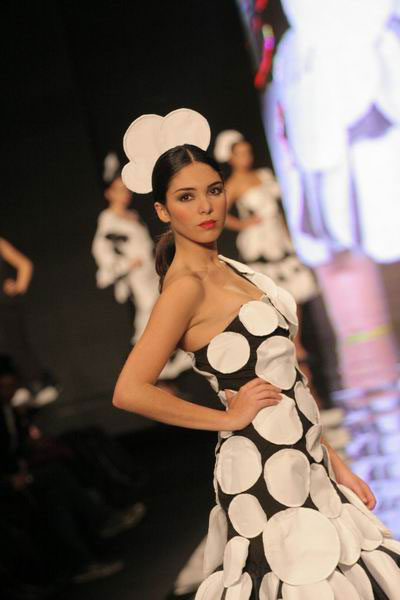
Following the classical lines of flamenco dress was the collection by Ana Vidal, from Lebrija, who demonstrated excellent dressmaking work and sensationalism with a collection full of color and references to the Muslim world. Her ruffles and patchwork are of note.
Antonio Jiménez’s line brought back the technique of fabric dying. His work, done on natural dark linen, was a success; especially the ruffled dresses with fading colors over a beige background, with a classical design and a bohemian tie die finish on his more modern pieces.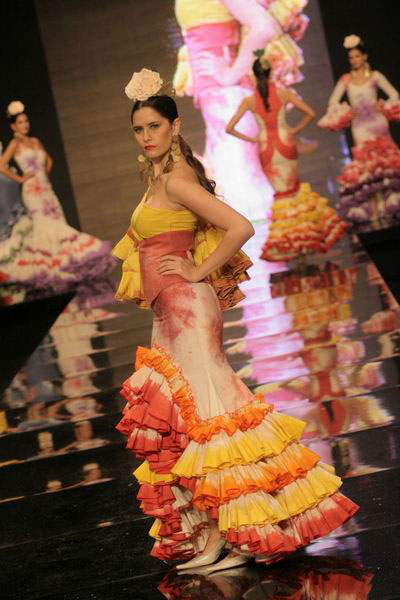
El colorido fue también protagonista y leit motiv de la colección de Vidal Carballo. Los colores... y el fútbol, ya que los tonos protagonistas de la colección rendían homenaje a los clubes de balompié de las 8 provincias andaluzas: rojo, blanco, verde, amarillo, turquesa, añil, pistacho, cardenal y naranja, tonos alegres sobre popelín satinado y, esta vez sí, cortes muy clásicos, mangas largas y estrechas y volantes al hilo fruncidos de gran volumen.
Color and the leit motif were the protagonists of Vidal Carballo’s collection. The colors... and football (soccer), as the colors paid homage to the footie clubs in the 8 Andalucian provinces: red, white, green, yellow, turquoise, indigo, pistachio and orange, joyful colors on satin poplin and classic cuts, long, narrow sleeves and voluminous ruffles. Labajo Yuste’s designs attract the sensationalist. Flamenco and Africa materialize in an exotic collection full of plunging necklines and backs, with nods to the African tribal tradition, such as round necklines of the Masai, and the choice of traditional patterned cotton cloth, along with poplins and satin. Imaginative work with ruffles.
Rafael Valverde presented the most original line, with a pretty fusion of urban 70’s and the typical flamenco dress: baggy shirts, low necklines, T-shirts of his own design... An excellent and noteworthy stylistic presentation: new materials for earrings, bracelets and flowers, mirror textures and exuberant shapes.
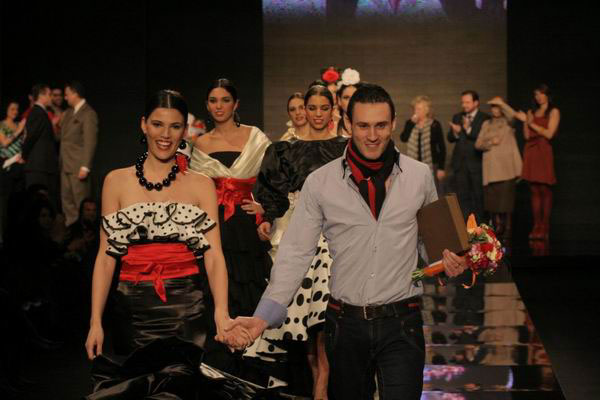
The jury had the very hard task of awarding only two collections with a 5000 and 1000 euro prize respectively. First prize went to the designer from Almeria, Antonio Egea, with a hyper feminine and youthful collection, with a white, black and red color scheme, full of original cuts, a-symmetries and classical elegance that demonstrated the designer’s versatility.
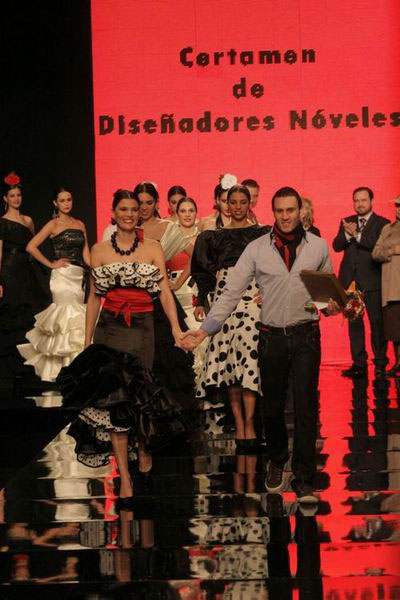
The second prize winner, Daniel Lora’s collection was made up of classic lines without stridency, a lesson in discretion and good retro needlework, tight waistlines and lots of ruffles.
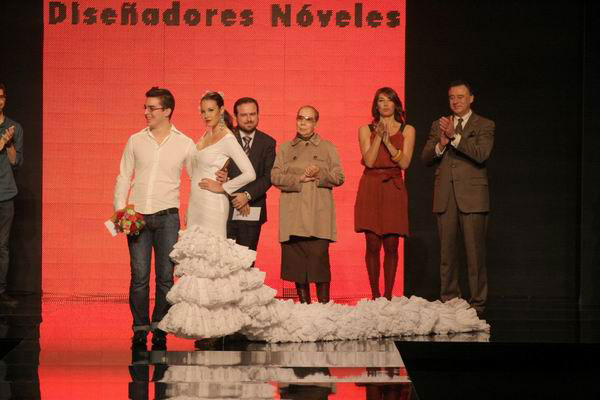
There are the up and coming designers who are here to stay.
-R.A
Photos: FIBES








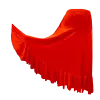
































 Wholesalers/Stockists
Wholesalers/Stockists Contact
Contact




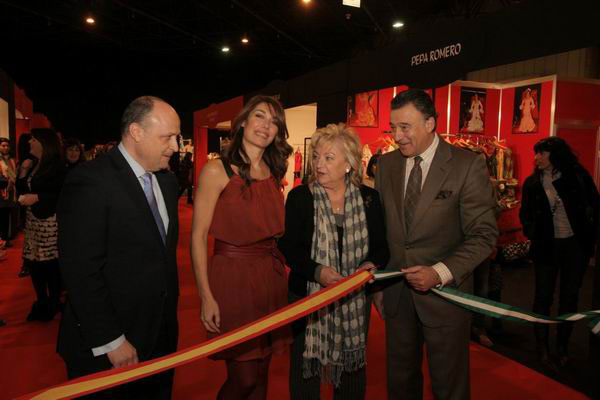 The XVI edition of the International Flamenco Fashion Salon began strongly today with proof that there is a lot of flamenco fashion, that it’s of interest and that despite the economic crisis, it mobilizes a growing number of consumers in search of new fashion, trends and ideas for what to wear at Spain’s next ferias... that flamenco fashion definitely sells. As in years past, SIMOF was inaugurated by the new designers, 9 promising young designers that presented their imaginative and daring collections.
The XVI edition of the International Flamenco Fashion Salon began strongly today with proof that there is a lot of flamenco fashion, that it’s of interest and that despite the economic crisis, it mobilizes a growing number of consumers in search of new fashion, trends and ideas for what to wear at Spain’s next ferias... that flamenco fashion definitely sells. As in years past, SIMOF was inaugurated by the new designers, 9 promising young designers that presented their imaginative and daring collections.